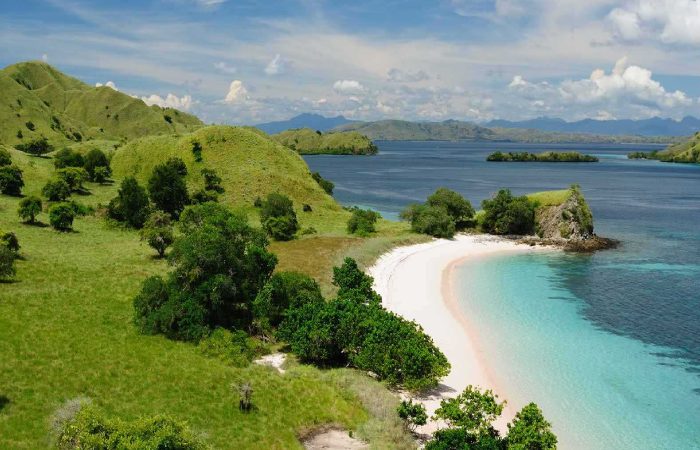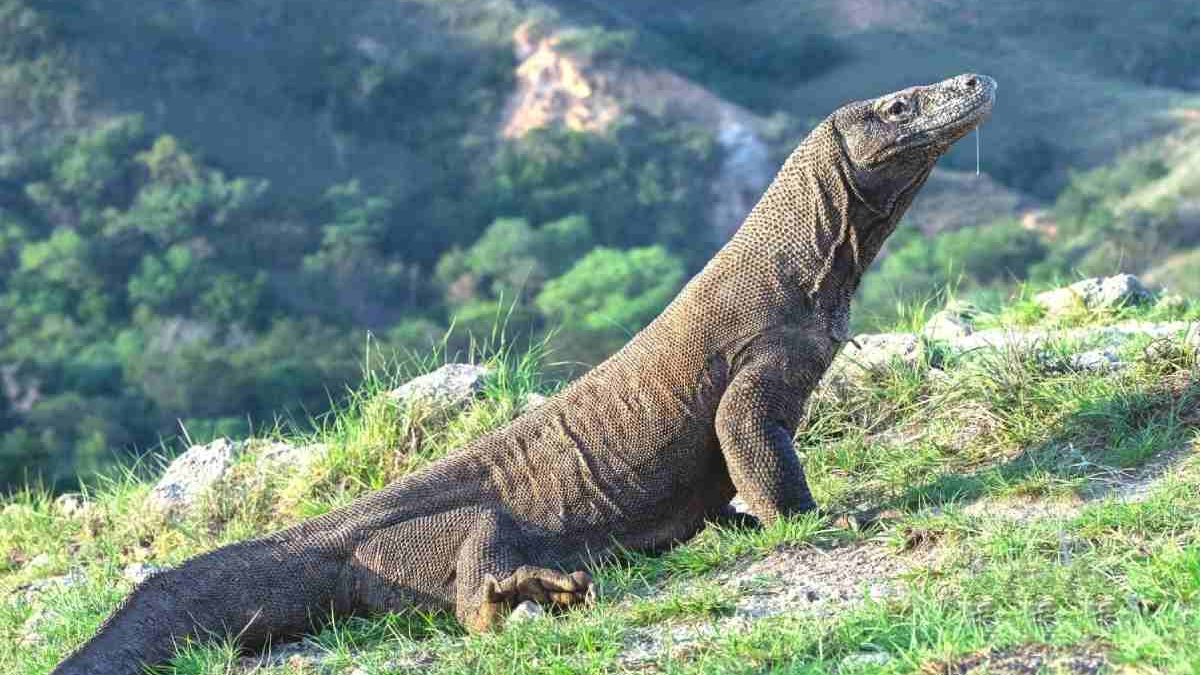Table of Contents
Introduction
Komodo National Park is located in the Indonesian’s archipelago, stands as a testament to the wonders of our planet’s natural beauty. Established in 1980, this UNESCO World Heritage site encompasses a group of islands, with the three main ones being Komodo, Rinca, and Padar. The park is renowned for its unique and diverse ecosystems, including the famous Komodo dragons, vibrant coral reefs, and breathtaking landscapes. In this article, we will delve into the enchanting world of Komodo National Park, exploring its rich biodiversity, geological marvels, and the conservation efforts that strive to preserve this ecological gem.
Moreover, these volcanic islands are inhabited by a population of approximately 5,700 giant lizards, whose appearance and aggressive behavior have earned them the nickname as Komodo dragons. Moreover, they exist nowhere else in the world and are of great interest to the scientists studying the theory of evolution. The steep slopes of the dry savannah and pockets of green, thorny vegetation contrast sharply with the bright white sand beaches and blue waters rising above the corals.
What is Komodo National Park and Where it is Located?
Komodo National Park is located in Indonesia was founded in 1980’s with the aim of protecting and preserving the only species of giant lizard. These reptiles are called “Komodo dragons” because of their violent behavior and appearance (they can measure up to three meters long and weigh 70 kg).
In 1991, the park was declared a World Heritage Site and Biosphere Reserve by UNESCO. Additionally, in 2011, it was declared one of the seven natural wonders of the world.
Subsequently, little is known about the early’s history of the Komodo Islanders. Indeed, most of the inhabitants of the park and its surroundings are fishermen from small neighboring islands or descendants of nomads. There are no pure-blooded people capable of passing on part of their ancient culture or language.
Breathtaking Biodiversity

One of the main charms of Komodo National Park is undoubtedly the Komodo dragon (Varanus komodoensis), the world’s largest living lizard. These formidable creatures, known as “ora” by the locals, can grow up to 3 meters in length and weigh more than 70 kilograms. So, the park provides a unique opportunity for visitors to observe these ancient reptiles in their natural habitats, offering a glimpse into their fascinating behaviors and interactions.
Beyond the Komodo dragons, the park boasts a staggering array of flora and fauna. The terrestrial ecosystems are a mosaic of savannah, monsoon forest, and mangrove swamps, providing habitats for a diverse range of species. Visitors can encounter Timor deer, wild boars, and various species of tropical birds, creating a harmonious blend of wildlife that reflects the park’s ecological richness.
Marine Wonderland
Komodo National Park is equally renowned for its mesmerizing underwater landscapes. The surrounding waters are a haven for marine lifes, making it a paradise for snorkelers and divers. The park is part of the Coral Triangles, a global centre of marine biodiversity, and hosts over 1,000k species of fish, 260 species of coral, and a variety of marine invertebrates.
Divers are treated to vibrant coral gardens, steep walls, and an abundance of marine species, including manta rays, sea turtles, and sharks. The crystal-clear waters provide visibility that can extend up to 30 meters, creating an immersive experience for those exploring the underwater wonders of Komodo.
Spectacular Landscapes
The landscapes of Komodo National Park are nothing short of spectacular. From the panoramic views atop Padar Island to the rugged terrain of Komodo and Rinca, each island offers a unique visual feast. Padar Island, in particular, is known for its iconic viewpoint that showcases three stunning bays with different coloured sands.
The park’s geological diversity is a result of its location within the volcanic Ring of Fire. Visitors can witness a blend of volcanic hills, savannahs, and coastal cliffs, creating a picturesque backdrop for the diverse flora and fauna. As the sun sets, the landscapes transform into a canvas of warm hues, casting a magical spell over the entire park.
Conservation Challenges and Efforts
Despite its natural splendor, Komodo National Park faces various conservation challenges. The increasing number of visitors, climate change, and illegal fishing pose threats to the delicate balance of its ecosystems. Recognizing these challenges, conservation initiatives and supportable tourism practices are being applied to ensure the long-term survival of this ecological marvel.
Efforts are underway to educate visitors about responsible tourism, minimizing their impact on the environment. Additionally, the local communities are actively involved in conservation programs, fostering a sense of stewardship for their natural heritage. The park serves as a model for balancing tourism with conservation, demonstrating that responsible practices can preserve the integrity of a delicate ecosystem.
Conclusion
The Komodo National Park stands as a testament to the wonders of our natural world, a place where ancient reptiles roam free, diverse marine life thrives, and landscapes captivate the imagination. As we explore the rich biodiversity, stunning landscapes, and ongoing conservation efforts, it becomes clear that Komodo National Park is not just a destination for tourists but a symbol of our collective accountability to preserve the beauty and diversity of our planet for future generations. Whether you’re an adventurer, nature enthusiast, or a curious traveler, Komodo National Park offers an unforgettable experience, inviting you to witness the magic of this ecological treasure trove.

